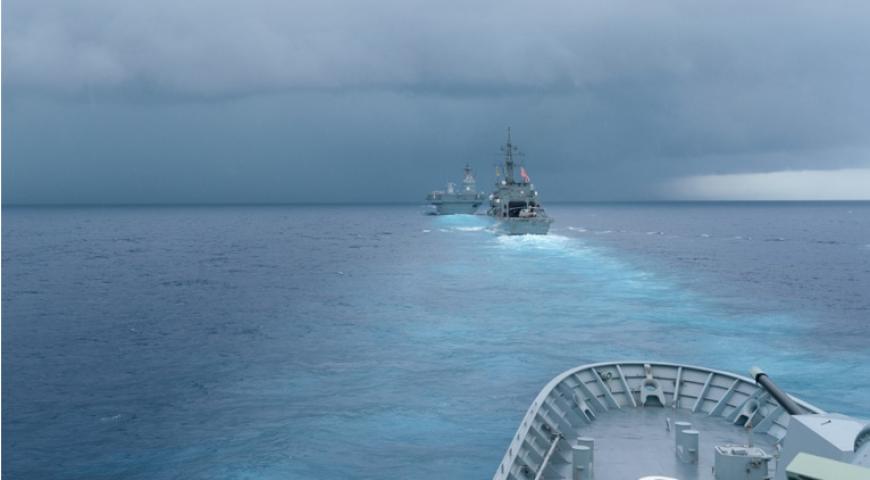Given the dramatic growth of the global space sector over the last two decades, the continued evolution of space into an increasingly congested, contested and competitive (3Cs) environment has been a growing concern. Far from the Cold War origins where only a very few nation states could invest in such an expensive and resource-intensive domain, modern innovation and economies of scale now enable a multitude of actors to build, launch and operate spacecraft for both defensive and peaceful purposes.
Consequently, the 3Cs dialogue that emerged with the growing number of geostationary (GEO) satellites is even more relevant given the proliferation of low Earth orbit (LEO) satellites over the last decade. The many new spacecraft being regularly placed into orbit is making space a progressively congested operating domain, compelling a renewed discussion about the impacts for all space-faring nations.
Spacecraft supporting defence applications are a significant contributor to the congestion. Modern militaries depend on them for enabling myriad defence purposes: satellite communications (SATCOM), global positioning systems (GPS), Earth observation, situational awareness, missile warning, space-based radar systems and intelligence gathering platforms. Because these applications are integral to many national security strategies, space-faring nations now view space as a contested and competitive domain where dominance and superiority are strategic objectives. That necessitates a specific line of military thinking and effort on how to operate in the domain, how to protect it, understand the threats and risks―and how to leverage those same vulnerabilities to deny and degrade the adversary’s use of the domain for their own purposes.
Key Considerations for Space-based Defence
That plethora of defence applications and dependencies means that maintaining assured access to space effects and enablers is essential to a nation’s security and stability. Military planners must factor domain considerations as a critical part of their focus, so they can ensure that the capabilities on which their war fighters depend will be accessible wherever and whenever needed. The uniqueness of operating in and through this challenging environment also requires personnel within military organisations that are space aware, savvy and resourceful. They need to understand how to leverage space to meet operational and mission requirements, and they must be well-versed in emerging capabilities and technologies that will further modernise their forces. That imperative for ‘space-mindedness’ is giving rise to dedicated defence Space Commands across global militaries.
A leading consideration for national as well as commercial space actors is acknowledging the imperative of responsible behaviours in the domain. How one conducts operations, protects assets and possibly attempts to hold an adversary at risk must be done conscientiously—not just for the good of others in the environment, but for the preservation of one’s own efforts and interests. Consider that launching anti-satellite weapons and kinetic effects in LEO regimes will introduce hazards for all spacecraft in that orbit and beyond. We have already seen the potential collision risks from space debris, and the odds of a catastrophic event are only growing. Equally concerning is the idea of weaponising space. While one might argue that placing nuclear weapons in orbit could serve as a deterrent to prospective adversaries, the potential for an ultimately apocalyptic result should be of grave concerns to everyone.
Consequently, the double-edged sword of pursuing offence and defence in this delicate environment compels a doctrine of responsible counter space. All actors must remain conscious that the domain is already congested, contested and competitive, and mindful that they should not take action that further exacerbates the situation.
The Role of Satellite Operators
Satellites are, of course, the most prevalent assets in orbit. Today we see operators that are deploying constellations with tens, hundreds or even thousands of them. That elevates the conversation on roles and responsibilities and the part satellite operators play in advocating and modelling responsible behaviours: how to share spectrum, how to de-conflict with other satellites, how to safely operate in a non-legislated traffic management program and how to safely de-orbit satellites at end of life.
Space situational awareness (SSA) and information sharing are key to the cooperation required for addressing these issues and preserving common benefit. Whether supporting defence or commercial applications, satellite operators can consider including active collaboration and sharing through organizations set up for such purposes. Across the globe, this would include organisations such as the United States’ Combined Space Operations Center (CSpOC), the Isle of Man’s Space Data Association, the European Space Agency’s SSA Programme and/or any of several others. This level of engagement, combined with deploying internal SSA systems, will help them identify conjunctions requiring action and efficiently plan avoidance manoeuvres.
Given SSA and other complex issues to be resolved, defence organisations and the satellite operators they depend on need to factor responsible behaviours into their program of operations now, so that as ever more satellites enter LEO and beyond, they are positioned to successfully adapt to this dynamic operating environment.
Space is truly a shared domain that stands to deliver unprecedented and even unanticipated benefits to humanity. It is incumbent upon all space-faring nations and organisations to ensure that a congested, contested, and competitive orbital environment remains safe and sustainable for all.
Defence Mastery
Balancing Defence in a Congested, Contested and Competitive Space Environment © 2025 by . This work is licensed under CC BY-NC-ND![]()
![]()
![]()
![]()
Please let us know if you have discovered an issue with the content on this page.
Comments
Start the conversation by sharing your thoughts! Please login to comment. If you don't yet have an account registration is quick and easy.





